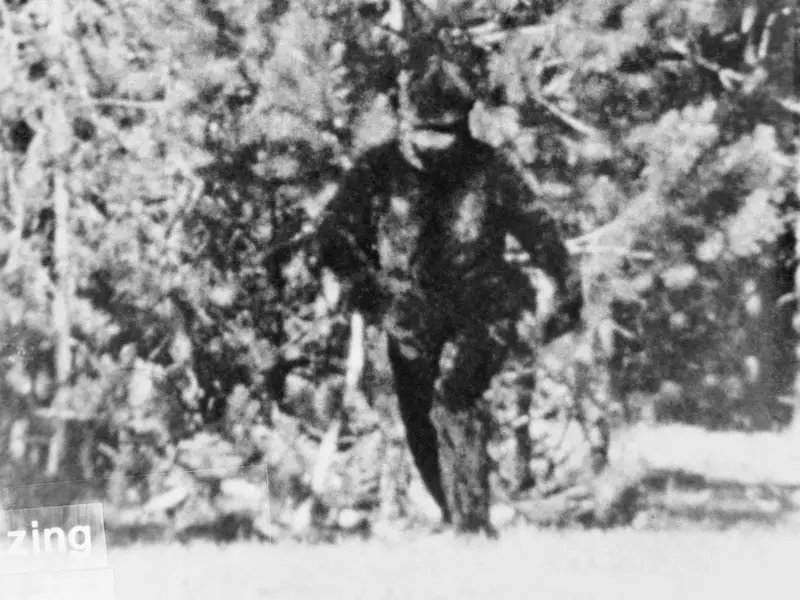
Horror Yearbook – Legends of the Yeti have fascinated explorers, scientists, and cryptozoology enthusiasts for centuries. The mysterious creature, also known as the Abominable Snowman, is deeply rooted in Himalayan folklore. This legendary beast is believed to inhabit the snowy mountain regions of Nepal and Tibet. Descriptions of the Yeti vary, but most portray it as a large, ape-like creature with shaggy fur. Despite many reported sightings and alleged evidence, no definitive proof confirms its existence. The Yeti remains a compelling figure in global mythology and modern culture.
The Yeti is often described as a towering, muscular, and hairy humanoid creature. Some accounts compare its appearance to a giant ape or bear. It is said to have a thick coat of fur, helping it survive in the harsh, cold Himalayan environment. Reports suggest the creature stands between 1.8 to 2.7 meters (6 to 9 feet) tall. Many believe the Yeti has a broad forehead, a flat nose, and large, deep-set eyes. Its long arms allegedly reach down to its knees, adding to its intimidating stature. Some descriptions depict it as half human and half ape, while others call it a “man-bear” hybrid. Despite these variations, all versions portray it as a powerful and elusive creature.
The legend of the Yeti has deep roots in Himalayan culture, where it is considered both a guardian and a feared being. Tibetan monks and Nepalese villagers have long shared stories of the Yeti roaming remote mountain regions. In some traditions, the Yeti is a protector of nature, while in others, it is a dangerous predator. Religious influences, including Buddhism and Hinduism, have shaped the Yeti’s mythological significance. The Himalayas’ challenging terrain and extreme weather added mystery to the creature’s legend. When Western explorers arrived in the 19th and 20th centuries, they popularized the legend of the Yeti. Their reports introduced the creature to the global imagination and inspired cryptozoological research.
Some researchers believe that Yeti sightings could result from misidentified animals native to the Himalayan region.
The Himalayan brown bear, also known as Ursus arctos isabellinus, lives in the high-altitude mountains of Nepal, India, and Tibet. This large, shaggy bear can walk on its hind legs, resembling a humanoid figure from a distance. Some experts believe misidentifications of these bears contributed to the Yeti legend.
The Tibetan blue bear (Ursus arctos pruinosus) is another rare species that could explain some Yeti sightings. It is known for its thick, silvery-brown fur and large size. The limited scientific study of this bear adds to the mystery. Local folklore may have exaggerated sightings of this rare animal into the myth of the Yeti.
Over the years, numerous climbers, trekkers, and locals have claimed to see the Yeti or its footprints. Some reports describe large, humanoid footprints in the snow, much bigger than those of any known animal. Many explorers have photographed these prints, but experts argue they may be distorted bear tracks. In 1951, British mountaineer Eric Shipton took a famous photograph of a giant footprint on Mount Everest. The image sparked worldwide fascination, but scientists have never confirmed its origin. Hair samples, bones, and other supposed Yeti remains have been collected, but DNA analysis often identifies them as bear-related. Despite this, believers argue that the Yeti remains undiscovered due to its remote habitat.
“Read more: How the Punk Music Revolution Changed the World”
The Yeti has appeared in countless books, films, and video games, making it one of the most famous cryptids in history.
Hollywood has frequently depicted the Yeti, often presenting it as a fearsome or misunderstood creature. In animated films like Monsters, Inc., the Yeti appears as a friendly, snow-dwelling character. In contrast, horror and adventure films like The Snow Creature (1954) and The Yeti (2017) depict it as a terrifying monster. The creature has also been featured in several Scooby-Doo episodes.
The Yeti has made appearances in video games, including Uncharted 2: Among Thieves (2009) and Far Cry 4 (2014). These games present the creature as a dangerous adversary in snowy landscapes. The Yeti also appears in Tomb Raider: Legend (2006), reinforcing its status as a mythical beast in the gaming world.
Authors and researchers have explored the Yeti legend in books, from scientific studies to fictional horror stories. Many novels use the Yeti as a mysterious antagonist, drawing inspiration from historical sightings.
Even today, the Yeti continues to inspire new theories, films, and investigations. Whether real or not, its legend endures as one of the greatest mysteries of the Himalayas.